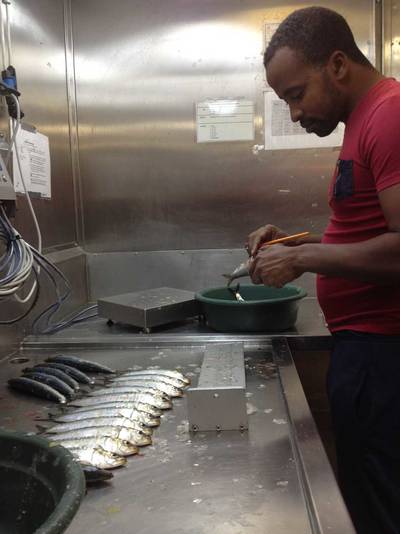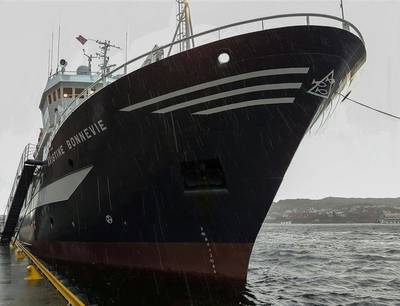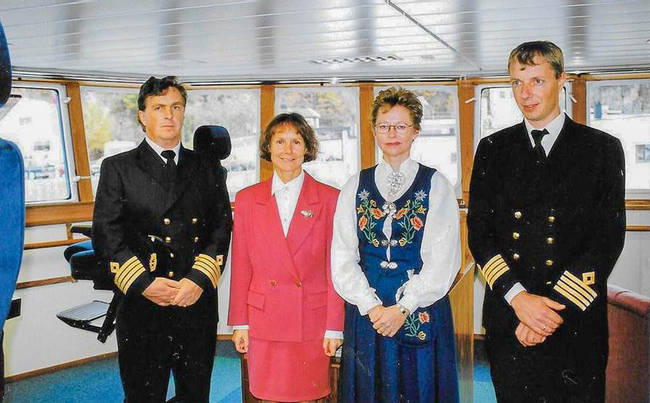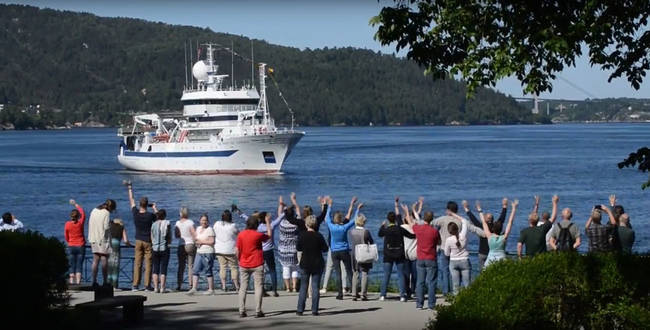Happy retirement to the second Nansen!
Following an active 23 years of international service, primarily conducting marine research in the waters off of Africa, the R/V Dr. Fridtjof Nansen is sailing into a well-deserved retirement. This was the second vessel under the Nansen Programme. Built in 1993, this Nansen measures a length of 56.75 meters, a breadth of 12. 5 meters and can accommodate up to 32 scientists and crew. The vessel contains laboratories in which work has been carried out over the past two decades studying fish, biological and environmental issues and hydrographic work.
Over its long history, the vessel mainly conducted research off the coast of Africa, The Benguela region of Angola featured heavily in this research work. The Nansen and its onboard teams were instrumental for research conducted under the Benguela Environment Fisheries interaction, the Benguela Current Large Marine Ecosystem project and the Benguela Current Commission.
Although this Nansen was most familiar with African waters, it also sailed on some survey voyages in Southeast Asia, mainly in the waters off Myanmar and Pakistan.
Many scientists had the opportunity to temporarily call this vessel home. Between the period 2007-2016, more than 650 scientists from forty-six countries set sail on the Nansen. This international team of scientists worked together onboard this dynamic ocean laboratory, bringing to the mix their specific set of skills, and training in fish species identification, quantitative acoustic assessment, mapping and environmental monitoring. Needless to say, these generations of scientists returned home with their newfound knowledge and enriched their universities, research institutes and ministries with the hands-on experience gained.
One of the longest survey voyages undertaken by this vessel spanned a full 116 days between the period of August-December 2008. That survey was carried out in the Western Indian Ocean, in collaboration with the Agulhas and Somali Currents Large Marine Ecosystem project.
In June 2015, the Nansen set sail from Jakarta, Indonesia on a forty-five-day demonstration survey across the southern Indian Ocean. The voyage was designed as ‘practice run’ to the upcoming Second International Indian Ocean Expedition – an exciting voyage that will be undertaken on the new Nansen vessel.
You can read all about the 2015 Indian Ocean voyage at our EAF-Nansen blog here. Twenty-four scientists and technicians from six African countries (Kenya, Madagascar, Mauritius, Seychelles, South Africa, and Tanzania) participated alongside scientists from seven other countries (Australia, Canada, France, India, Indonesia, Norway, and Spain). The Nansen’s gender policy means that many of those scientists on board were women, and through the blog, we interviewed many of them and asked for their advice for young girls hoping to become scientists. That survey voyage undertook numerous activities, including the study of southern Indian Ocean gyre, and, in particular, the study of mesopelagic fish and the aggregation of floating plastics located in that gyre.
This vessel served the Nansen programme well for twenty-three years. Although we count down to the launch of the brand new Nansen, we also wish to raise our glass to wish a very happy, and well-deserved retirement to the second Nansen vessel.
Although it predated the Sustainable Development Agenda, for twenty-three years this Nansen provided a valuable contribution to the work we will be carrying out under Sustainable Development Goal 14 – Life under Water. Congratulations to the second Nansen for all its years dedicated to better understanding our oceans!
You can see the video of the arrival in Bergen HERE.






